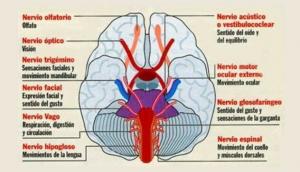Eigengrau: the hallucinatory color we see when we close our eyes
Close your eyes. Do you see? Probably the first thing we answer is nothing, or darkness. A darkness that we generally associate with blackness.
But let's close our eyes again and take a closer look, is what we see really black? The truth is that what we see is rather a grayish color, the eigengrau, which we are going to talk about in this article.
- Related article: "Color psychology: meaning and curiosities of colors"
What is eigengrau and why is it a false color?
We call eigengrau the color that we perceive when we keep our eyes closed or are in complete darkness, said color being less dark than the one that corresponds to black.
It is a dark gray color, close to black but curiously, despite being perceived in the absence of light, it is lighter than an object of this last color in full light. The intensity of the perceived gray can be slightly different depending on the person. In fact, the term in question means intrinsic gray or own gray in German. It is considered that this term was investigated and popularized by
Gustav Theodor Fechner, known for his important role in the genesis of psychophysics and the measurement of human perception.Its perception is considered a phenomenon generated by the retina or its nerve connections with the brain, or a product of its action. However, it has been observed that the perceived color is not totally stable. As time goes by and we keep our eyes closed, the gray gradually appears to become lighter or even perceptions of color may appear.
Explanation of your perception when you close your eyes
Eigengrau color perception may seem strange when we consider that we shouldn't actually be able to detect anything with eyes closed or in complete darkness, with various explanations that have been tried to offer in this regard at a level scientist.
1. general interpretation
Already from Fechner's first investigations it was suspected and considered that this perception arose as a kind of residue or background noise of neuronal activity. Even with the eyes closed, the different nerves remain active and carry out discharges, generating neuronal activity in the absence of light that the brain is not able to separate from a true perception of luminosity. It would therefore be the product of nervous activity, something that in fact is true to a greater or lesser extent.
2. Rhodopsin isomerization
Another theory that seeks to delve into the cause of the perception of eigengrau links this perception with the isomerization of rhodopsin, the type of pigment linked not to color perception but to the perception of movement and light, allowing vision in the dark and in the penumbra.
3. neuromelanin
Finally, another of the main explanations links the perception of this greyish tone, especially with the formation of neuromelanin. It is a photosensitive pigment that is produced by the oxidation of dopamine and the norepinephrine.
This production takes place in different areas of the brain, especially in the black substance, he locus coeruleus, pons, or cranial vagus nerve.
Linkage with hallucinatory phenomena
The eigengrau and its perception have been linked to the existence of hallucinations, considering in fact a hallucinatory phenomenon of a biological, physiological and non-pathological type. The reason for this consideration is the fact that deep down you would be perceiving something that does not really correspond to an external reality.
Some authors also link the perception of this color with a different hallucinatory phenomenon: the appearance of hallucinations hypnagogic and hypnopompic.
In both cases we would be facing perceptions without an object and of variable complexity that usually occur in moments of transition between different states of consciousness, specifically the passage from wakefulness to sleep (hypnagogic hallucinations) or vice versa (hypnopompic hallucinations), and which they do not consider pathological but rather the product of imbalances between the activation and deactivation of different processes and networks in the process of falling asleep and waking up (also called hallucinations physiological).
Bibliographic references:
- Bynum, E. B.; Brown, a. c.; King, R. D., & Moore, T. EITHER. (2005). Why Darkness Matters: The Power of Melanin in the Brain. African American Images: Chicago, Ill.
- Bynum, E. b. (2014). Dark light consciousness: the pathway through our neural substrate. Psychdiscourse, 48(2).
- Fechner, G.T. (1860). Elemente der Psychophysik. Leipzig: Breitkopf and Hartel.
- Nieto, A.; Torrero, C. and Salas, M. (1997). Comparative study of the density of neuromelanin in the locus ceruleus and the substantia nigra in some mammals, including man. Journal of Psychopathology, 17 (4): 162-167. CSIC.

